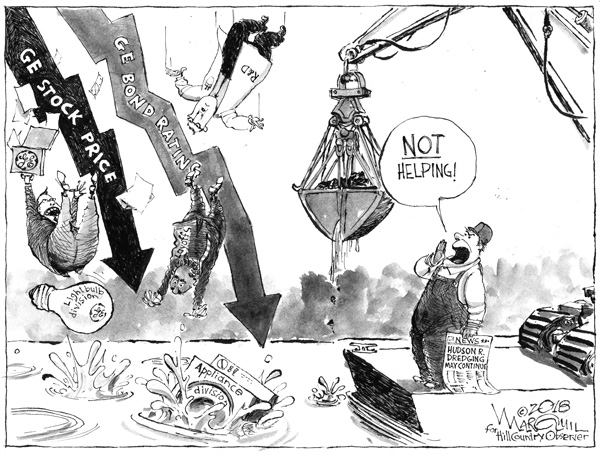Editorial February-March 2018
E D I T O R I A L
Are the pundits wrong about Elise Stefanik?
Among the professionals who monitor Washington politics, everyone seems to agree that freshman Republican U.S. Rep. John Faso of the Hudson Valley is one of the most endangered incumbents in the nation.
In this year’s hotly contested midterm elections, control of the U.S. House could be at stake. Democrats need a net gain of 24 seats to reclaim a majority, and Democratic voters, angry about President Trump’s behavior and policies, turned out in force in recent elections around the nation.
So Faso, whose district stretches from Rensselaer and Columbia counties south and west to the Pennsylvania border, has emerged as a top Democratic target. His district has a slight Democratic edge in voter enrollment, and at least eight Democrats are currently vying for the chance to take him on.
Three respected nonpartisan handicappers – the Cook Political Report, Inside Elections, and Larry Sabato’s Crystal Ball – all rate Faso’s district as one of the most competitive in the nation. Besides Faso, these analysts count three or four other GOP-held House districts in New York as at least potentially in play, with Rep. Claudia Tenney of the Utica area at greatest risk after Faso.
But none of the professionals consider Rep. Elise Stefanik, R-Willsboro, to be anything less than a safe bet for re-election. After all, Stefanik, first elected in 2014, cruised to re-election two years ago with 66 percent of the vote in New York’s northernmost House district.
Somehow, though, the memo on Stefanik’s invincibility never made it to a lot of would-be candidates in her district. As of January, at least nine Democrats had declared their intention to challenge Stefanik, setting the stage for what might be the most crowded Democratic primary ballot in northern New York’s history.
Even more surprising is that campaign finance reports filed at the end of 2017 showed seven of the Democratic hopefuls had raised a total of more than $900,000 between them – or nearly as much as the $1.16 million that Stefanik’s re-election campaign reported having in its war chest.
It could be, of course, that tilting at windmills has suddenly become fashionable. There are about 50,000 more Republican voters than Democrats in Stefanik’s district, which extends from Washington County to the Canadian border and west to Lake Ontario. That partisan edge alone makes the race look daunting.
Also consider that the sprawling 21st Congressional District is divided among three distinct media markets and has few if any Democratic office-holders who would be known distictwide.
Still, elections sometimes turn on more than money, credentials or even ideology.
It’s a safe bet that whoever wins the Democratic primary will try to tie Stefanik to all manner of unpopular Trump administration policies. Her vote last year to repeal the Affordable Care Act, also known as Obamacare, likely will be Exhibit A in any Democratic case that the district needs a new representative in Congress, and there are many other issues where one might argue Stefanik and her party are at odds with the district’s interests.
But if Stefanik proves vulnerable, it will more likely be on matters of overall style – her tendency to avoid or ignore tough questions, her habit of reciting scripted talking points, and the lingering sense that she is a bit of an empty suit.
If the Democrats can settle on a skilled candidate who seems authentic, this safe Republican district might suddenly turn competitive.


